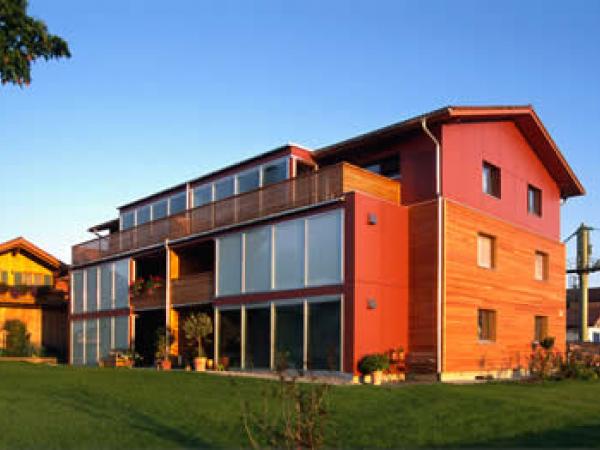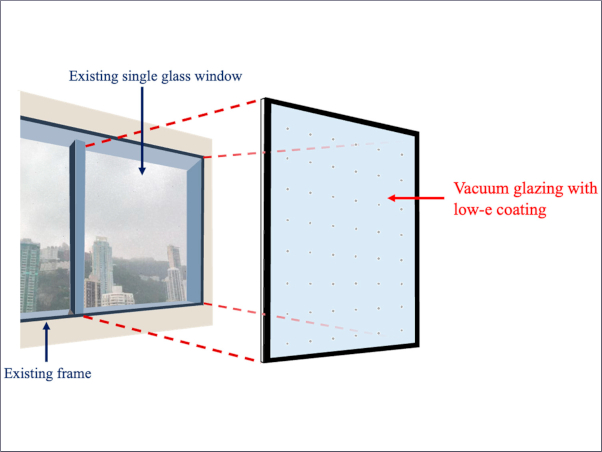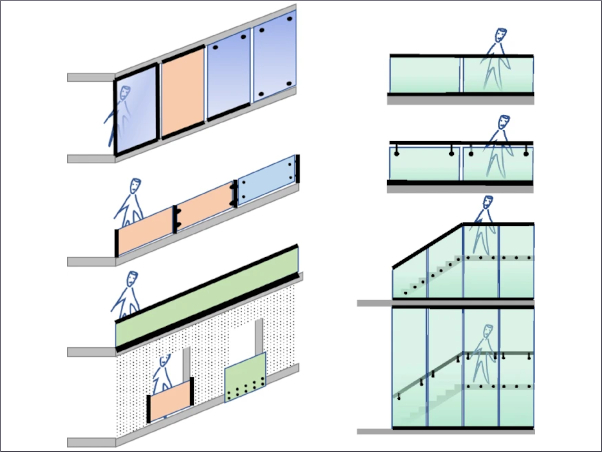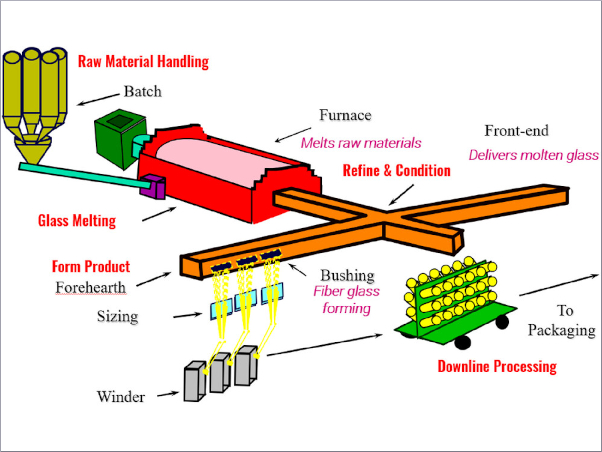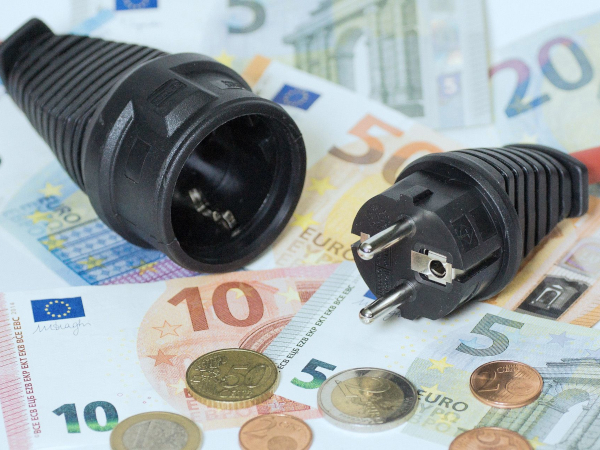For structural glass producers and finishers this is a challenge and opportunity at the same time. Ever more efficient functional types of glass are being sought – in exchange for enormous market potential.
The reduction of energy consumption so imperative to halt climate change makes the energy efficiency of construction products a pivotal requirement for architects. Over the past fifteen years enormous improvements have been achieved in the thermal insulation of windows and glazing (see Figures 1 and 2).
High-insulation frame designs and insulation glass have long made a decisive contribution to bringing down energy consumption in public and residential buildings. And yet, against the background of new energy requirements glass producers have to consistently develop their products further in order to be able to compete “in the premiere league” for shares in the building skin market.
.jpg)
Image 1: Before energy-efficient refurbishment: Built in 1964 this multi-family building with six flats and over 600 m² living space was to be refurbished with energy-efficient products and its roof was to be lifted to improve use of the attic. Before this move heating oil consumption totalled 25 litres per square metre of living space. Photo: dena
Near-Zero Energy Buildings
In Europe specified energy targets are already becoming clearly visible. With the implementation of the revision of Directive 2002/91, the EU Directive of the European Parliament and the Council on the Energy Performance of Buildings adopted in 2009, final energy consumption is to be reduced by 5% to 6% and CO2 emissions by 4% to 5% in the EU by 2020.
One of the essentially new provisions of the Directive is that all 27 member states must now lay down a national minimum standard for the energy efficiency of buildings that is mandatory for new buildings as well as for larger reconstructions and this should be guided by the European comparative method.
.jpg)
Image 2: After the energy-saving reconstruction: in addition to a complete insulation of all outside walls the building was given triple-insulation glass, a generously glazed conservatory as well as the latest heating and ventilation technologies. Thanks to the use of energy-efficient construction products heating oil requirements could be cut to 1.5 l per year and square metre of living space. This amounts to a 94% reduction. The annual CO2 savings total 50 tons: Photo: dena
The Directive also states that from 2021 all new buildings in Europe shall be “Near-Zero Energy Buildings” with remaining heating and cooling needs essentially being covered by renewable energies. For new public buildings these high requirements will already apply two years earlier. This means the benchmark for the construction industry and its products is very high. Germany already set the pace here with the 2009 Energy Savings Ordinance (EnEV) entering into force in October 2009 which has tightened the requirements substantially.
For instance: the admissible primary energy demand of new buildings was reduced by an average of 30%. In addition to this, the demands made on thermal insulation parameters (specific transmission heat losses H´T) of the building skin rose by an average of 15%. In the area of refurbishment of existing buildings the relevant parameter specifications for components of the building skin rose by an average of 30%. Another tightening of legal requirements is imminent with the next amendment of the Regulation on Renewable Energies in 2012.
Great Potential for the Glass Industry
Such ambitious energy saving targets can only be achieved through the use of highly efficient construction products. This is especially true for the energy-saving modernisation of buildings, currently the driving force in the building sector. In Germany alone approximately 340 million windows are technically obsolete consuming unnecessary amounts of energy according to Jochen Grönegräs, CEO of the German Flat Glass Manufacturers’ Association (Bundesverbandes Flachglas e.V.).
The German Association of Fenestration and Façade Manufacturers (Deutscher Verband der Fenster- und Fassadenhersteller e.V.) estimates the total “stock” of windows in Europe to approx. 3.3 billion units (1 window unit = 1.69 m² ). “A large proportion of energy waste is accounted for by the 2.2 billion obsolete windows dating back to before 1995, which should be replaced by modern, energy-efficient heat insulation windows as fast as possible,” demands the CEO of the Association, Ulrich Tschorn. This represents enormous market potential for window makers and insulation glass producers for years to come.
.jpg)
Graph: The graph shows how window designs (top wood, bottom plastics and metal) and glazing in Germany have developed since 1950. The abbreviations in the bottom timeline correspond to the Ordinance on Thermal Insulation (WSCHVO) and Energy Savings Ordinance (EnEV) in force. Source: ift Rosenheim
The situation with new buildings is not that obvious. Here the construction glass industry has to ensure with innovative products that there is no trend back to smaller glass surfaces due to the ever higher insulation requirements. In view of the huge functional potential offered by modern glass products for thermal insulation, shading, light direction as well as exploitation of solar gains and power generation, even today they stand an even greater chance of taking over even more functions in building skins than ever before.
In view of the reductions in the already very good heat transition coefficients (U-value) so far achieved with thermal insulation glass people will have to weigh off in future whether the achievable heating energy savings are actually higher than the lower solar gains (g-value) caused by reducing the U-value.
.jpg)
Table: KPIs of different glazing with a timetable.
Increasing importance will be attached to add-on functionalities in future, which are specifically geared to a building as part of a general energy-saving layout. Especially for public buildings shading systems integrated into the glass, solar control glass with electrochromic coatings (EC) or light direction system placed in the spacing between window panes can display their strengths and substantially contribute to reducing heating and cooling needs and/or the use of artificial light. In view of the wish to achieve “near-zero energy buildings” photovoltaics also play a special role. As a provider of eco-friendly power photovoltaics will increasingly feature in façades in future.
Market Success depends on Innovations
The glass industry is among the innovation leaders when it comes to improving the energy efficiency of residential and public buildings. For both new and existing buildings the performance of products decides on how much energy can be saved and/or generated by solar gains and building-integrated photovoltaics (BIPV) without CO2 emissions. In view of ever stricter legal provisions and rising energy prices only the companies that manufacture and market top products will be successful market players.
A comprehensive overview of the latest innovations in the international glass sector is provided by glasstec 2010. Under the motto “Energy Efficiency with Glass” the world’s biggest glass trade fair held in Düsseldorf from 28 September to 1 October 2010 will present the entire cross-section of glass products and applications of importance for developments for energy efficiency in the construction sector and beyond. Likewise, the Special Show glass technology live with exhibits providing a look into the future of glass as well as the Architecture Congress held during glasstec are both devoted to the topic of energy efficiency.
Press Contact glasstec 2010 Sebastian Pflügge/Corinna Kuhn
Tel.: +49(0)211/4560-464 oder -598
Fax: +49(0)211/4560-87 464
E-Mail: PflueggeS@messe-duesseldorf.de
KuhnC@messe-duesseldorf.de


